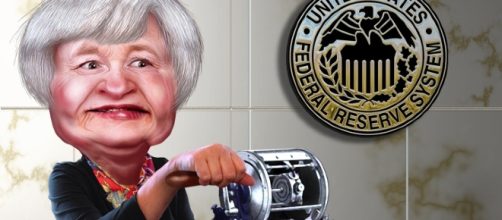The decision to increase Interest Rates from 1 percent to 1.25 percent was as a result of improved labor market conditions. The countries economic growth has also risen gradually over the years. The Federal Reserve has also stated in the past that keeping rates low for an extended period is risky for the economy.
U.S. #Federal_Reserve raises interest rates from 1.0% to 1.25% pic.twitter.com/NZqQiJuX8X
— Amana Capital - EN (@amanafn) June 14, 2017
Major areas of growth
The unemployment level of the country is low. At 4.3 percent, the level of unemployment has never been this low for more than 16 years.
The U.S has progressed economically since the 2008 economic recession. Before the recession, the unemployment rate was below 5 percent, it, however, went to highs of 10 percent. The growth of GDP was also weak and went negative at some point. The Federal Reserve reduced interest rates from 5.25 % to 0.25 % so as to encourage banks to lend cheaply to businesses and consumers and thus increase the money supply and business activity in the country. The 0.25 percent interest rate had lasted for three and a half years before the Fed began to increase the rates late last year as a risk mitigation measure.
With regards to GDP, growth has been positive over the years but not as high when compared to GDP of economies such as India and China.
The U.S growth mostly relies on consumer spending. An increase in consumer spending may have been as a result of an increase in the number of U.S workers getting jobs. The U.S Gdp Growth in the first year's quarter was 1.2 percent, which is low compared to the 6.9 percent recorded in China and 6.1 percent in India. Trump's economic proposals, such as increasing tariffs on Chinese imports and exiting the U.S from NAFTA may stimulate growth further by encouraging local production.
Effects of an increase in interest rates
Since interest rates are the loan rates the federal reserve bank charges commercial banks when they borrow cash due to shortages, loan rates banks charge to customers will rise. Small banks are fond of borrowing from the federal reserve because they lack enough cash deposits as compared to large banks.
An increase in interest rates might also enhance the value of the dollar, which is already strong when compared to currencies of other countries. Exporting will thus be difficult while imports will be cheaper. An increase in interest rates might also reduce U.S growth as liquidity within the economy that can be used to spur growth is reduced.
Interest rates of other countries
Developed countries have lower interest rates when compared to developing countries. Those in the advanced nations have access to cheap credit compared to people in developing countries. Some counties even have negative interest rates. They include Switzerland, Denmark, Sweden, and Japan. Examples of high central bank interest rate countries are Argentina at 26.25 percent, Ghana at 23.5 percent and Venezuela at 21.46 percent.
Global debt saturation. Interest rates shooting to the moon. Global credit freeze. America the New Venezuela in 2017. https://t.co/A88xPLJoug
— pennies onthedollar (@pennyondollars) January 18, 2017


